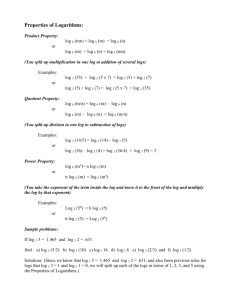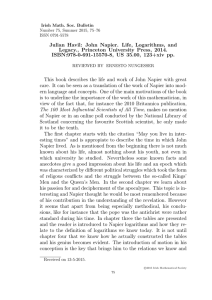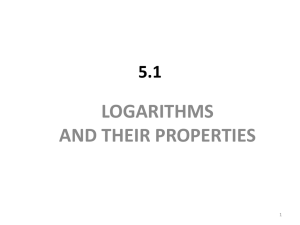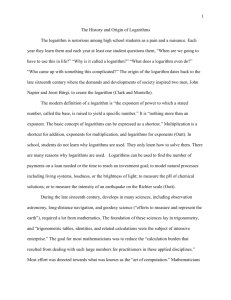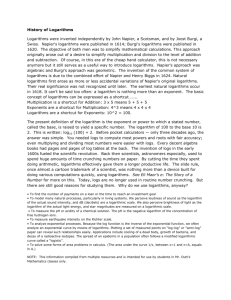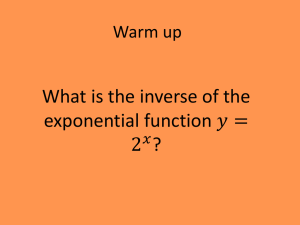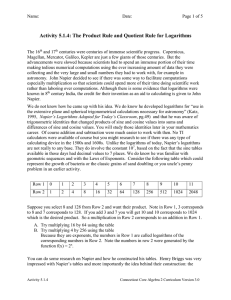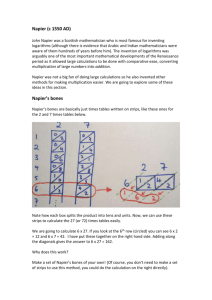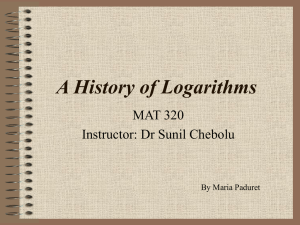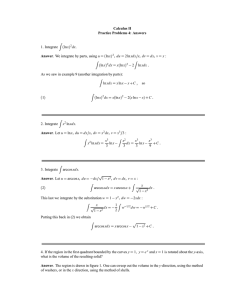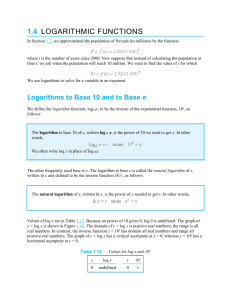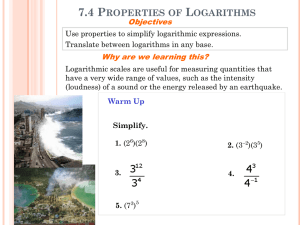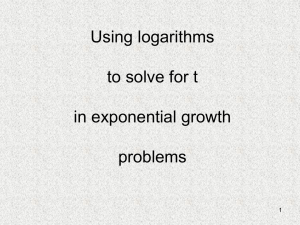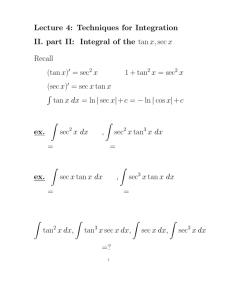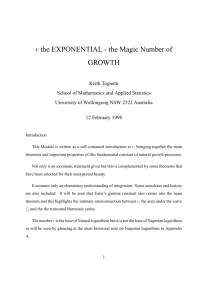5.1-5.2 The Natural Log Function
advertisement
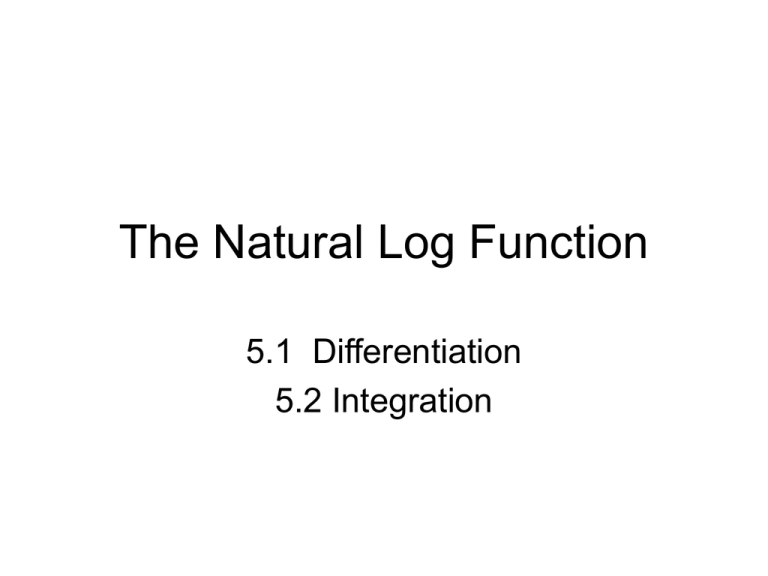
The Natural Log Function 5.1 Differentiation 5.2 Integration A Brief History of e • 1616-1618 John Napier, Scottish, Inventor of Logarithms, e implied in his work—gave table of natural log values (although did not recognize e as base) • 1661 Christian Huygens, Dutch, studies relationship between the area under a rectangular hyperbola and logarithms, but does not see connection to e (later he does evaluate log e to 17 decimal places, but does see that this is a log) • 1668 Nicolaus Mercator, German, names the natural logarithm, but does not discuss its base A Brief History of e • 1683 Jacques Bernoulli, Swiss, discovers e through study of compound interest, does not call it e or recognize its connections to logs • 1697 Johann Bernoulli (Jacques brother) begins study of the calculus of exponential functions and is perhaps the first to recognize logs as functions • 1720s Leonard Euler, Swiss, first studied e, proved it irrational, and named it (the fact that it is the first letter of his surname is coincidental). A Brief History of Logs • Napier: studies the motion of someone covering a distance d whose speed at each instant is equal to the remaining distance to be covered. He divided the time into short intervals of length , and assumed that the speed was constant within each short interval. He tabulated the corresponding values of distance and time obtained in this way. • He coined a name for their relationship out of the Greek words logos (ratio) and arithmos (number). He used a Latinized version of his word: logarithm. • In his table, Napier chose = 10-7 (and d = 107). In modern terms, we can say that the base of the logarithm in Napier's table was • The actual concept of a base was not developed until later. Definition of Natural Log Function • 1647--Gregorius Saint-Vincent, Flemish Jesuit, first noticed that the area under the curve from 1 to e is 1, but does not define or recognize the importance of e. Definition of Natural Log Function x 1 ln x dt, x 0 t 1 y y x x Definition of e e 1 ln e dt 1 t 1 e 2.7182818284 6 Review: Properties of Logs (i.e. Making life easier!) ln(1) 0 ln(ab) ln a ln b a ln ln a ln b b n ln a n ln a Practice: Expand each expression 10 ln 9 ln 3 x 2 6x ln 5 ln x x 3 2 3 2 x 1 2 Derivatives of the Natural Log Function d 1 ln x , dx x x0 d 1 du u ' ln u , dx u dx u d 1 du u ' ln u dx u dx u u0 Practice: Find f ’ (Don’t forget your chain rule!!) 1) f ( x) ln(2 x) 2) f ( x) ln(x 2 1) 3) f ( x) x ln x 4) f ( x) ln x 3 5) 6) f ( x) ln x 1 f ( x) ln x x 1 2 2 2 x3 1 7) 8) 3 x 2 y , x 1 2 x x2 1 y , 2 3x 2 x2 x 1 9) 10) f(x) ln cosθ Find therelativeextremaof y ln x 2 2 x 3 Log Rule for Integration 1 x dx ln x C 1 u du ln u C Practice: Don’t forget to use u-substitution when needed. 2 1) dx x 2) 1 4 x 1 dx 3) x x 2 1 dx 4) 3x 2 1 x3 x d x 5) sec2 x tan x dx 6) x 1 x 2 2 x dx 1 7) dx 3x 2 8) x2 x 1 x 2 1 dx 2x 9) dx 2 x 1 10) 1 x ln x d x 11) tan xdx 12) sec xdx Integrals of the Trig Functions sin udu cosu C cosudu sin u C tanudu ln cosu C cotudu ln sin u C * * sec udu ln sec u tanu C sec udu ln csc u cotu C * * ** Prove these! 13) 14) Find theaverage value of f ( x) tan x on 0, 4 1 tan2 x dx
